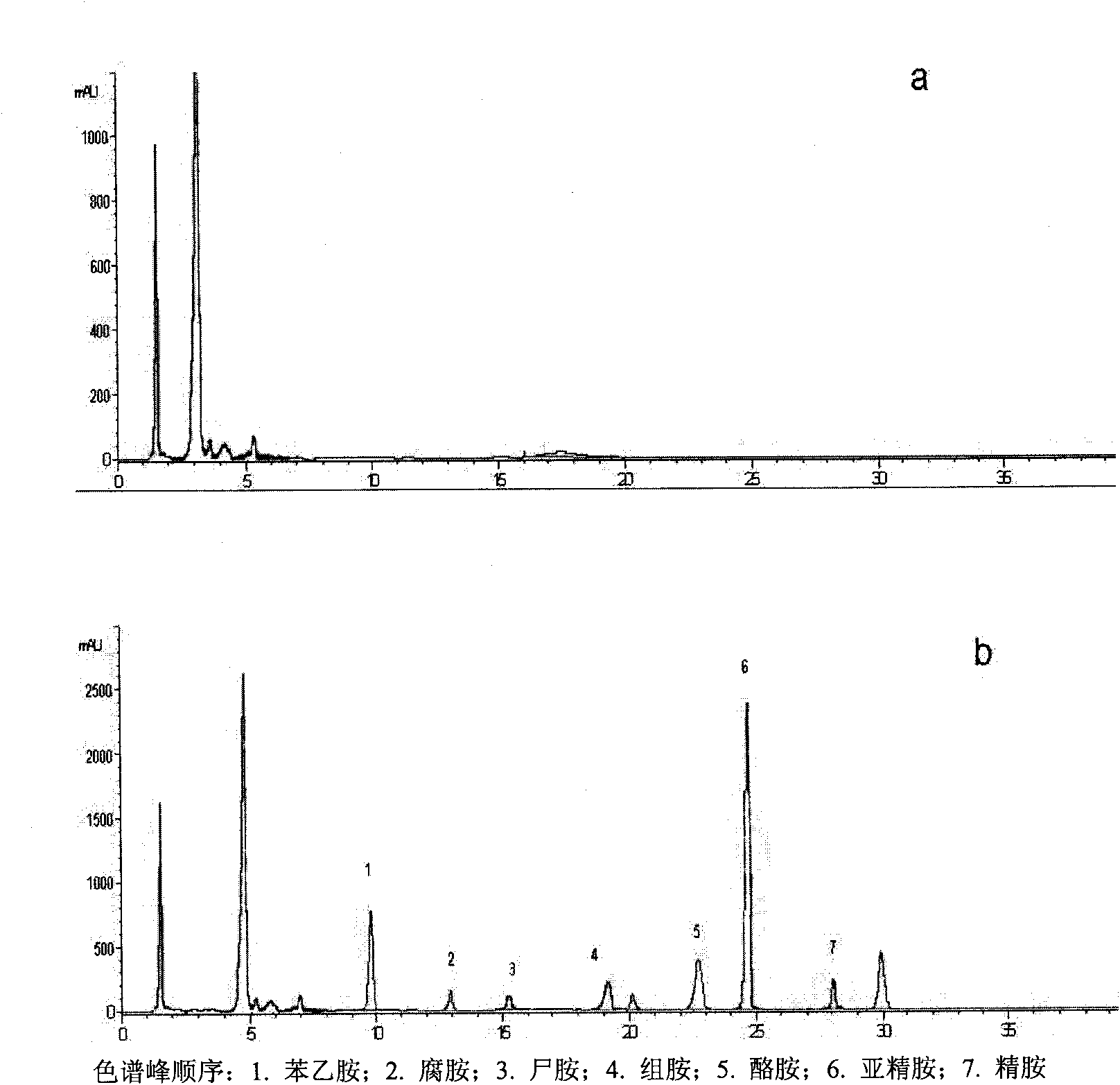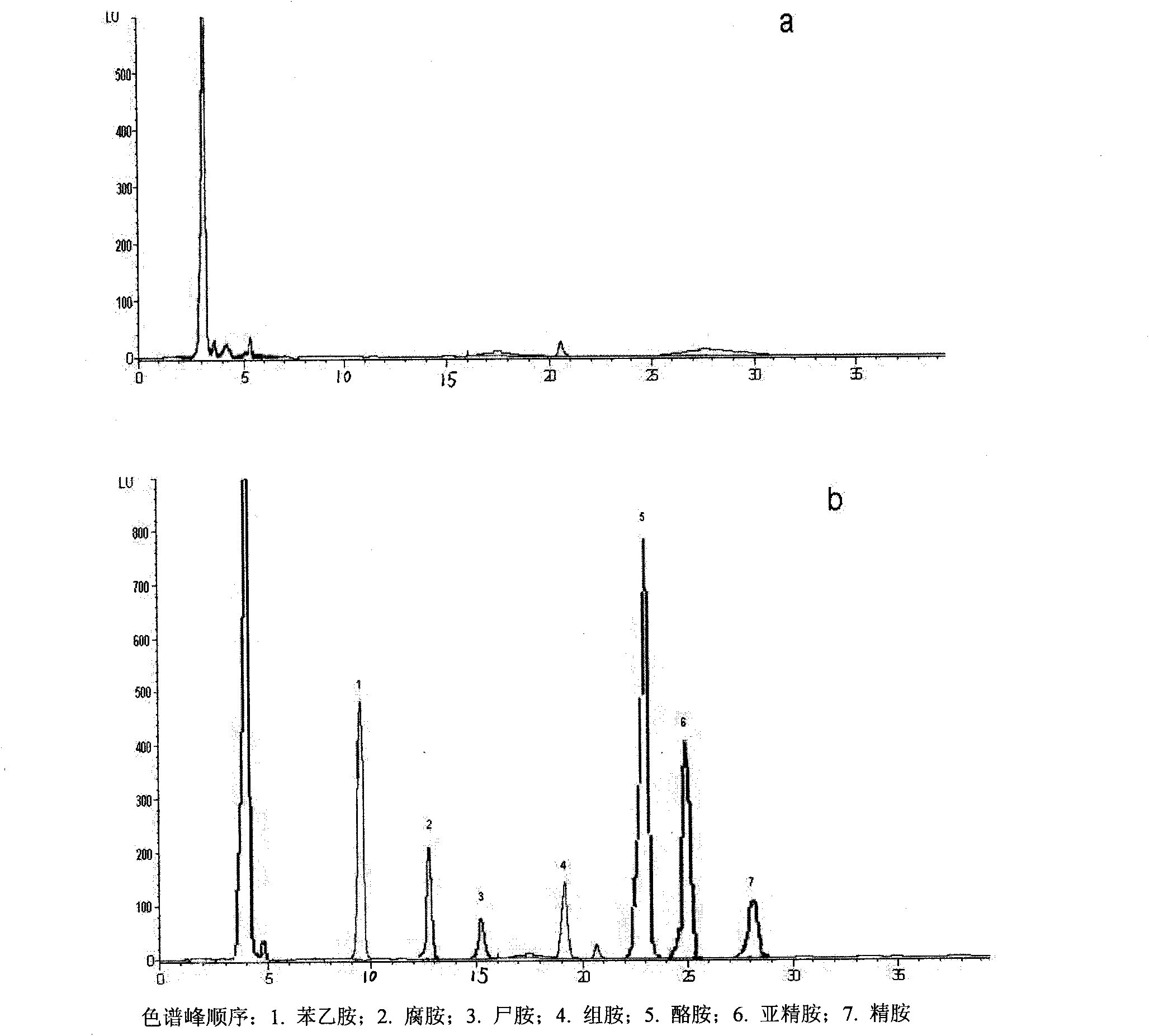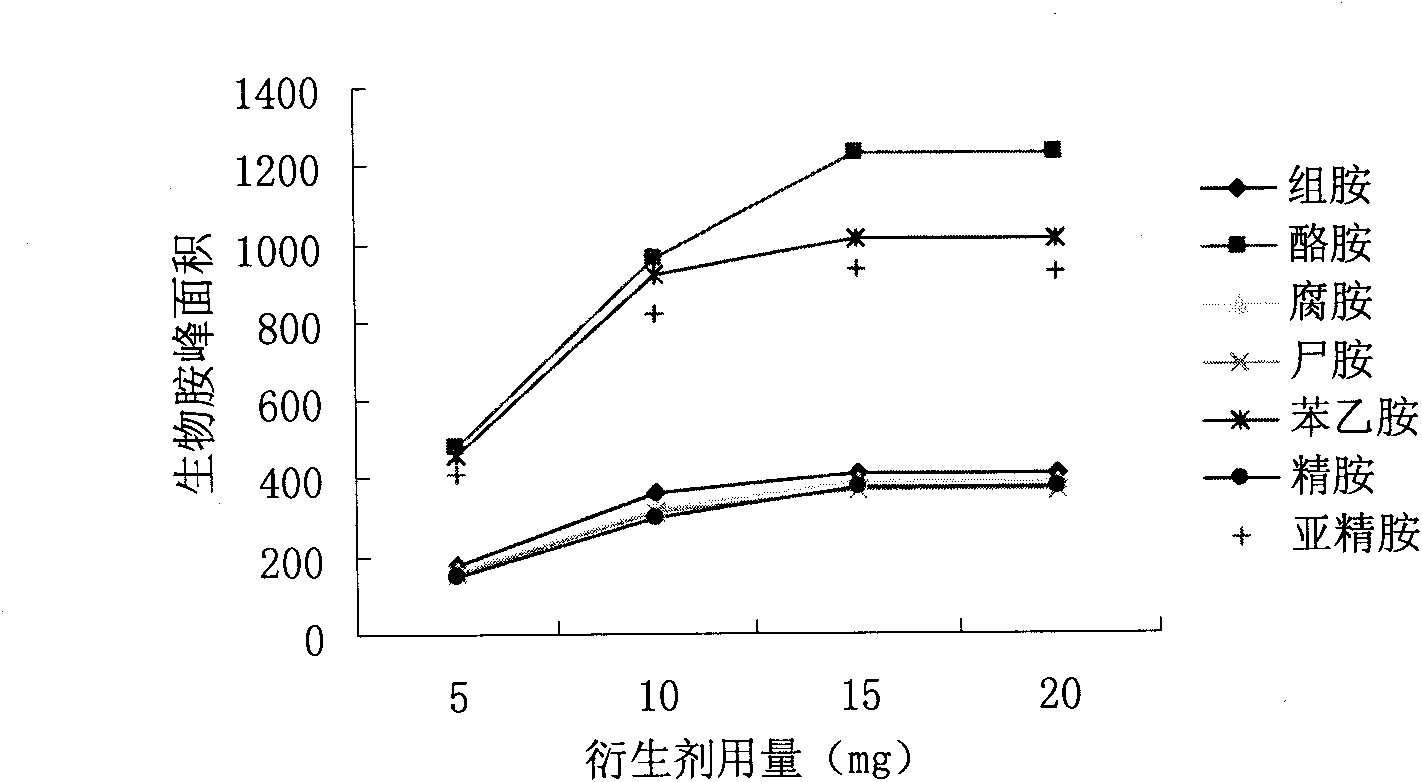Separation and liquid chromatography column pre-column derivatization method of biogenic amine in soybean paste
A liquid chromatography column and pre-column derivatization technology, applied in the field of separation and detection of biogenic amines, can solve the problems of low sensitivity, detection by fluorescence detectors, and lack of fluorescence characteristics, etc., to achieve less consumption of reagents and loss of analytes The effect of small size and less interference of spectral peaks
- Summary
- Abstract
- Description
- Claims
- Application Information
AI Technical Summary
Problems solved by technology
Method used
Image
Examples
Embodiment 1
[0027] Weigh 4 g of naturally fermented soybean paste from Northeast China into a centrifuge tube, add 6 mL of 5% trichloroacetic acid solution, and homogenize for 3 min at 10,000 r / min. After homogenization, centrifuge at 3500r / min for 5min. Collect the supernatant, repeat the extraction of the residue once with 6mL 5% trichloroacetic acid, combine the extracts, then add 6mL n-hexane to remove lipid impurities, vibrate vigorously and then statically separate the layers, discard the n-hexane layer, and then add 6mL n-hexane The operation was repeated once with alkane, and the lower trichloroacetic acid phase was taken out after the layers were separated. Dissolve 10 mg of dansyl chloride in 1 mL of acetone, prepare fresh and store in the dark. Add 200μL, 2mol / L NaOH solution to 1mL sample solution, then add 300μL saturated NaHCO 3 Solution buffer. Add 1.5 mL of dansyl chloride solution, put the mixed solution in a 40°C incubator for 40 minutes, add 100 μL of ammonia water t...
Embodiment 2
[0029] Weigh and grind 6 g of bean paste produced in Northeast China into a centrifuge tube, add 12 mL of 5% trichloroacetic acid solution, 10000 r / min, homogenize for 3 min. After homogenization, centrifuge at 3500r / min for 5min. Collect the supernatant, repeat the extraction of the residue once with 12mL 5% trichloroacetic acid, combine the extracts, then add 12mL n-hexane to remove lipid impurities, vibrate vigorously and then statically separate the layers, discard the n-hexane layer, then add 12mL n-hexane The operation was repeated once with alkane, and the lower trichloroacetic acid phase was taken out after the layers were separated. Dissolve 10 mg of dansyl chloride in 1 mL of acetone, prepare fresh and store in the dark. Add 400μL, 2mol / L NaOH solution to 2mL sample solution, then add 600μL saturated NaHCO 3 Solution buffer. Add 3 mL of dansyl chloride solution, put the mixed solution in a 40°C incubator for 40 minutes, add 200 μL of ammonia water to remove dansyl...
Embodiment 3
[0031] Weigh 10 g of industrially produced seasoned soybean paste into a centrifuge tube, add 15 mL of 5% trichloroacetic acid solution, and homogenize for 3 min at 10000 r / min. After homogenization, centrifuge at 3500r / min for 5min. Collect the supernatant, repeat the extraction of the residue once with 15mL 5% trichloroacetic acid, combine the extracts, then add 15mL n-hexane to remove lipid impurities, vibrate vigorously and then statically separate the layers, discard the n-hexane layer, and then add 15mL n-hexane The operation was repeated once with alkane, and the lower trichloroacetic acid phase was taken out after the layers were separated. Dissolve 10 mg of dansyl chloride in 1 mL of acetone, prepare fresh and store in the dark. Add 200μL, 2mol / L NaOH solution to 1mL sample solution, then add 300μL saturated NaHCO 3 Solution buffer. Add 1.5 mL of dansyl chloride solution, put the mixed solution in a 40°C incubator for 40 minutes, add 100 μL of ammonia water to remo...
PUM
| Property | Measurement | Unit |
|---|---|---|
| recovery rate | aaaaa | aaaaa |
| recovery rate | aaaaa | aaaaa |
Abstract
Description
Claims
Application Information
 Login to View More
Login to View More - R&D
- Intellectual Property
- Life Sciences
- Materials
- Tech Scout
- Unparalleled Data Quality
- Higher Quality Content
- 60% Fewer Hallucinations
Browse by: Latest US Patents, China's latest patents, Technical Efficacy Thesaurus, Application Domain, Technology Topic, Popular Technical Reports.
© 2025 PatSnap. All rights reserved.Legal|Privacy policy|Modern Slavery Act Transparency Statement|Sitemap|About US| Contact US: help@patsnap.com



